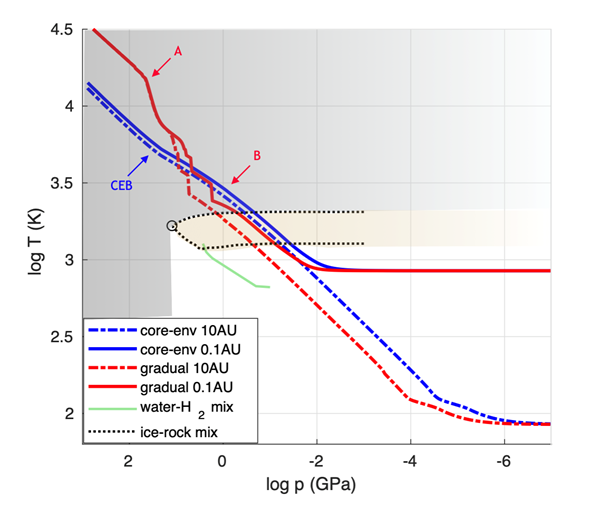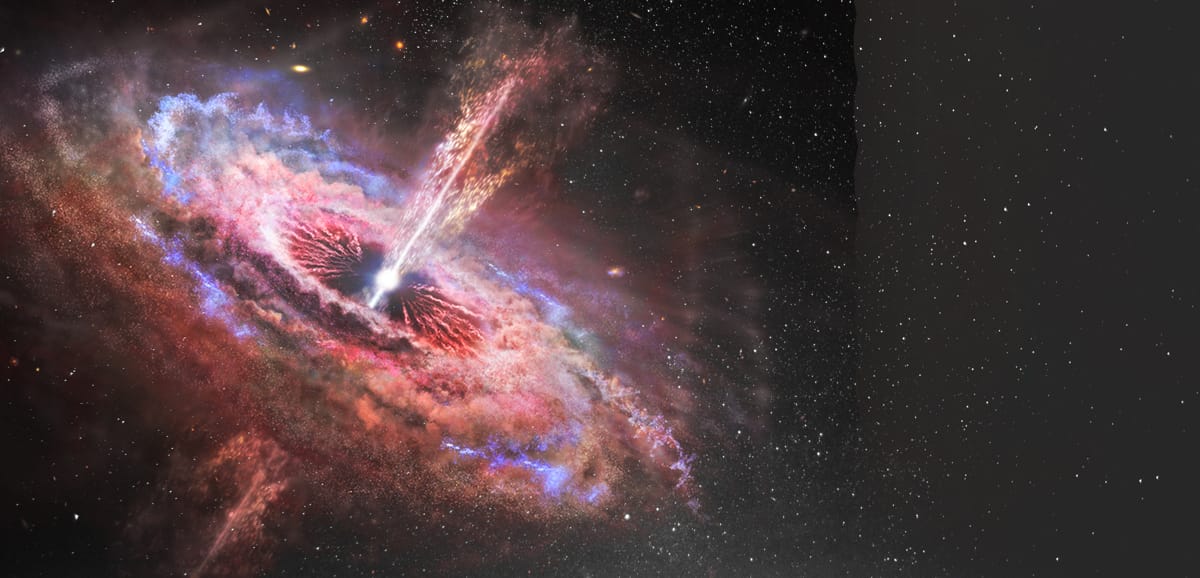Although water is necessary for life as we know it, a large fraction of water in exoplanet interiors may lead to unique conditions, under which the interior structure differs from the simple layered structure of a water ocean on top of a rocky surface, that supports life.
In this work we use experimental data of ice-rock interaction at high pressure, and calculate detailed thermal evolution for possible interior configurations of ice-rich planets, in the mass range of super-Earth to Neptunes (5-15 Earth masses). We model the effect of migration inward on the ice-rich interior by including the influences of stellar flux and envelope mass loss.
Our main findings are:
- Ice (water) and rock are expected to remain mixed, due to miscibility at high pressure, in substantial parts of the interiors of ice-rich planet in the mass range of 5-15 Earth masses, even after Gyrs of thermal evolution.
- Effect of migration on the thermal evolution of the deep interior is small. The deep interior of planetary twins that have migrated to different distances from the star (beyond 0.03AU) are similar, if mass loss is insignificant.
- Significant mass loss results in separation of the water from the rock on the surface and emergence of a volatile atmosphere of less than 1% of the planet’s mass. In the absence of hydrogen-helium envelope the ice and rock demix at the surface (at distances larger than 0.02AU). The rock is then dissolved in the deeper layers where ice and rock remain mixed, and the outer envelope is composed of water in steam / condensed form.
- The mass of the atmosphere of water / steam is limited by the ice-rock interaction. The total ice / water content of a planet cannot be inferred from the atmospheric mass and abundance, as large fraction of the ice may be stored in the interior, mixed with the rock.
- Mixing of elements by convection (convective-mixing) is limited in ice-rich planets. The gradual structure is mostly stable along the thermal evolution. Planets with gradual metal distribution have hotter deep interiors, in comparison to core-envelope structure.
- Ice-rich planets with substantial gas envelopes develop ice-rock demixing only in the outer gas envelope, where water is miscible in the hydrogen.
- Mass loss increases the metal enrichment of the envelope. For planets with gradual composition distribution the mass loss flattens the composition gradient, resulting in large scale convection and fast cooling.
We conclude that when ice is abundant in planetary interiors the planet structure may differ significantly from the standard layered structure of a water shell on top of a rocky core. Similar structure is expected in both close-in and further-out planets.
A new perspective on interiors of ice-rich planets: Ice-rock mixture instead of ice on top of rock / Vazan, Allona; Sari Re’em; Kessel Ronit

Pressure-temperature profiles of 15 Earth mass planets with 10% gas at the age of 10 Gyr. The same metal (ice and rock) content is gradually distributed (red) or located in a pure metal core surrounded by a gas envelope (blue). Core-envelope boundary is marked with blue CEB arrow, and the gradual composition distribution region expands between the red A-B arrows. The planets are located at 10AU (dashed) or migrated to 0.1AU (solid). In the shaded areas, taken from Fig. 2, ice and rock are expected to stay mixed. Above the hydrogen-water mix curve (green), water is miscible in hydrogen. The mass in the shaded area is > 99% of the planet’s mass for all cases.

Schematic interior structure of ice-rich planets for different mass loss scenarios: no mass loss (left), hydrogen mass loss (middle), all gas mass loss (right). Each sketch is split to show the two interior structures we examined. The ice & rock mixture region covers more than 99% of the planet’s mass for planets in the mass range of 5M⊕ to 15M⊕ (and above).





